Nestled in the Vizianagaram district of northern Andhra Pradesh, the small and serene town of Bobbili lies along the Vizianagaram–Raipur rail route. It’s most dramatic and defining moment came on January 24, 1757, in what is now known as the Battle of Bobbili.
The town’s small but determined forces stood against a formidable alliance of the French, the Nizam of Hyderabad, and their bitter rivals, the Vizianagaram Samsthanam.
Rather than surrender, the people of Bobbili—led by their royals and warriors—chose to fight to the last man. When it became clear that defeat was certain, the inhabitants of the fort, including women and children, committed suicide to avoid capture and dishonor. This ultimate act of valor and sacrifice has since been immortalized in Telugu literature, drama, and cinema, with Bobbili becoming a symbol of courage, pride, and resilience.
Bobbili was established around 1652 by Pedda Rayudu, a scion of the Padmanayaka Velama clan and the 15th descendant of the Rajas of Venkatagiri. He was granted this territory by Sher Muhammad Khan, the Nawab of Srikakulam, as a reward for his loyal service during the Nawab's southern military campaigns.
According to local legend, the town was originally named "Pedda Puli", meaning "Big Tiger" in Telugu—a name reflecting its founders’ valor. Over time, it evolved linguistically to Pebbuli, then Bebulli, and finally to Bobbili, the name by which it is known today.
The main architectural attraction in Bobbili is its fort and palace, constructed in 1801 by Rayudappa. The palace complex includes a grand Durbar Hall, the royal residential quarters, and a small museum displaying artifacts of the kingdom’s rich history. Within the fort premises is the Venugopala Swamy Temple, dedicated to the family deity, adding a spiritual aura to the regal setting.
Beyond its martial legacy, Bobbili is also famed for its handcrafted Veenas, musical instruments renowned across India. The Bobbili Veena, or Saraswati Veena, is carved from a single block of jackfruit wood, with frets made of bell metal and a prominent lion-faced motif near the resonator. This intricate art is preserved by the Sarwasiddi artisan community, who have handed down their skills through generations.
These veenas gained international recognition when one was gifted to U.S. President Bill Clinton by Chief Minister N. Chandrababu Naidu during his 2000 visit to India. Today, the Bobbili Veena holds a Geographical Indication (GI) tag and is patented, highlighting its cultural and artistic significance.
After the founding of Bobbili by Pedda Rayudu, his son Lingappa Rayudu succeeded him and played a pivotal role in shaping the town’s legacy. It was Lingappa who built the original Bobbili fort, laying the foundation for what would become the symbol of the town's identity.
Lingappa’s loyalty and courage earned him great favor with the ruling elite—particularly when he rescued the son of Nawab Sher Muhammad Khan, who had been abducted by rebels. In gratitude, the Nawab granted Lingappa twelve villages and conferred upon him the hereditary title of "Ranga Rao", a title that has since been adopted by all the rulers of Bobbili.
Following Lingappa, the lineage continued through his adopted son Vengala Ranga Rayudu, succeeded in turn by Rangapati Rayudu, and later by Rayadappa Rayudu, under whom the construction of the expanded palace complex took place in 1801.
From its very inception, Bobbili shared a fierce and long-standing rivalry with the neighboring Pusapati rulers of Vizianagaram—a feud that would shape the political dynamics of northern Andhra for decades.
The conflict began when Pedda Vijayarama Raju of Vizianagaram attempted to capture Narayanapatnam, dispatching an army led by Sagi Narayana Raju. However, the Bobbili forces decisively defeated the invaders, marking the beginning of a tense and often bloody power struggle.
Undeterred, Vijayarama Raju built the Belagam Fort near Parvatipuram as a strategic outpost and successfully occupied Narayanapatnam. Emboldened by this, he launched a second assault on Bobbili, which once again ended in defeat at the hands of the resolute Bobbili defenders.
A third campaign, this time under Pusapati Ramachandra Raju, also failed, with the Vizianagaram forces forced into retreat after another failed siege. These repeated setbacks only deepened the animosity between the two samsthanams, eventually culminating in the Battle of Bobbili in 1757, where French military intervention would tip the scales.
The famed Battle of Bobbili unfolded during the reign of Gopala Krishna Rayudu, the adopted son of Rayadappa Rayudu.
In 1753, an agreement was forged between Nizam Salabat Jang, the Subedar of the Deccan, and the French Governor General of Pondicherry, Marquis de Bussy. Under this treaty, the entire Northern Circars—a fertile and prosperous coastal belt in northern Andhra Pradesh—was ceded to the French East India Company.
This strategic acquisition not only granted the French a rich source of revenue, but also complete control over the Coromandel Coast, strengthening their military and trade dominance in South India.
The Pusapati rulers of Vizianagaram, who had long harbored ambitions of subduing Bobbili, saw an opportunity in this alliance.
Amidst the growing unrest, a rift developed between Nizam Salabat Jang and Marquis de Bussy, weakening the French position in the Deccan. Sensing the instability, Zamindars across the Northern Circars—who had resented French control—refused to pay taxes, with the notable exception of the Pusapati rulers of Vizianagaram, who remained loyal to the French in hopes of personal gain.
Realizing the precariousness of the situation, Bussy reconciled with Salabat Jang, and in 1757, he arrived at Rajahmundry via Machilipatnam, establishing his military camp at Kotipalli, a strategic site near the Godavari delta. Here, Bussy extended invitations to all the Zamindars and local rulers of the region to discuss terms and reaffirm their loyalty.
However, Gopala Krishna Ranga Rao of Bobbili—whether out of principle, distrust, or protest—refused to attend. This act of defiance proved to be a turning point. Vijayarama Raju ever opportunistic, seized the moment to malign Ranga Rao in Bussy’s court. Exploiting the absence, he convinced Bussy and his diwan, Hyder Jung, that the Bobbili ruler was rebellious and a threat to French authority.
Ever the schemer, Pedda Vijayarama Raju carefully manipulated the facts to turn the French fully against Bobbili. He painted Gopala Krishna Ranga Rao as defiant, claiming he had shown disrespect toward Marquis de Bussy by ignoring his invitation and was allegedly instigating attacks on Vizianagaram’s territory.
Playing to Bussy’s interests, Vijayarama Raju argued that if Bobbili were handed over to him, he would ensure uninterrupted tax payments and loyalty to the French. The proposal appealed to Bussy’s immediate need for stability and revenue in the volatile Northern Circars.
As tensions escalated, Bussy issued a humiliating ultimatum to Ranga Rao, he was to vacate the Bobbili fort and relocate his kingdom to Palakonda.
This demand struck at the very dignity and sovereignty of the Bobbili rulers, descendants of warriors who had never bowed before any power. To abandon their ancestral seat without resistance was unthinkable.
Further tipping the scales, Vijayarama Raju bribed Bussy’s Diwan, Hyder Jung, to strengthen the case against Bobbili. The French, already wary and pressured, were now fully convinced that military action was justified. With French cannons, Vizianagaram's forces, and Bussy’s sanction, the stage was now set for what would become one of the most tragic and heroic battles in Andhra’s history.
Thus, what began as a diplomatic mission swiftly turned into a military campaign, with French support backing Vizianagaram’s long-standing ambitions. The path was now clear for the fateful assault on Bobbili—a siege that would test the mettle of its people and etch their sacrifice into legend.
The political climate grew even more volatile when a group of French sepoys, needing to travel through Bobbili territory, sought and received formal permission from Gopala Krishna Ranga Rao. Yet once again, Vijayarama Raju’s machinations came into play. In a deliberate act of sabotage, he orchestrated a surprise raid on the sepoys, resulting in the death of 30 soldiers—and cunningly framed the Bobbili ruler for the ambush.
Simultaneously, discontent was brewing within French ranks. Ibrahim Khan, the French faujdar (military commander) of Srikakulam, openly revolted against Bussy, inciting French sepoys in Rajahmundry to mutiny. When Bussy marched in to suppress the rebellion, Ibrahim Khan fled to Bobbili and took refuge under Ranga Rao’s protection.
Whether out of genuine hospitality or political necessity, this act proved to be the final nail in the coffin. Already influenced by Vijayarama Raju’s propaganda and Hyder Jung’s bribes, Bussy now saw Bobbili not merely as defiant—but as actively hostile and subversive to French rule.
Now convinced that Bobbili must be crushed, Bussy resolved to move against the fort with full force, combining French artillery and infantry with Vizianagaram's armies. The siege was no longer about taxation or diplomacy—it had become a war of annihilation.
Fully aware that Bobbili stood little chance militarily against the combined might of the French forces, equipped with artillery, and the large armies of the Nizam and Vizianagaram, Gopala Krishna Ranga Rao made a final, desperate bid to avert war through diplomacy.
In an earnest gesture, he dispatched his trusted emissary, Pantena Bucchanna, to negotiate with Hyder Jung, the Diwan of Marquis de Bussy. Ranga Rao sought to clarify the misinformation being spread by Vijayarama Raju and hoped to present Bobbili’s position as one of loyalty and self-respect, not rebellion.
When Pantena Bucchanna reached the French camp to negotiate on behalf of Ranga Rao, he was met with cold indifference. Hyder Jung, already swayed by Vizianagaram’s manipulation and bribes, rebuffed the overture sharply, questioning, “Why did your master not come in person to meet Marquis de Bussy?”
Ranga Rao also conveyed to Hyder Jung that if the negotiations failed, he intended to seek direct talks with M. Commodore, the French official stationed at Machilipatnam, who was known to be more sympathetic to the Bobbili cause. This was a bold move—signaling not defiance, but an appeal to justice and reason within the French ranks.
Bucchanna, ever composed, tried to explain that Ranga Rao’s absence at the earlier meeting was not out of arrogance or disrespect, but due to the presence of his arch-rival Vijayarama Raju, whose longstanding hostility made the environment unsafe and politically untenable.
But Hyder Jung was unmoved. Dismissing the explanation, he issued an ultimatum: “Tell your master to vacate the fort immediately.”
It was a demand that struck at the heart of Bobbili’s honor. Pantena Bucchanna’s reply was swift and firm, embodying the indomitable spirit of his people:
“As long as a single soul of Bobbili remains alive, we shall not abandon our fort.”
Undeterred by Hyder Jung’s rejection, Pantena Bucchanna, following Ranga Rao’s instructions, made his way to Machilipatnam to meet M. Commodore, the French official known for his sympathetic stance toward Bobbili. Bucchanna conveyed Ranga Rao’s sincere desire for peace and his refusal to abandon his kingdom without cause.
Moved by the plea and recognizing the dangerous influence Vijayarama Raju held over Bussy’s decisions, Commodore wrote a letter to Marquis de Bussy, urging him to reconsider. In the letter, he emphasized that the people of Bobbili desired peace, not war, and cautioned Bussy against believing the devious fabrications being spread by the Vizianagaram ruler.
However, even this intervention failed to change Bussy’s mind. Vijayarama Raju, sensing the threat Commodore’s letter posed to his ambitions, swiftly acted again.
He reiterated to Bussy that Ranga Rao’s continued refusal to meet him in person was a clear sign of disrespect and rebellion. In a calculated move, he said:
“See how he sends letters and emissaries, but will not face you himself. Is that how a loyal subject behaves?”
This final manipulation tipped Bussy irrevocably toward war. Despite Commodore’s caution, despite Bobbili’s efforts for peace, the truth was buried beneath ambition, gold, and politics.
With diplomacy exhausted, Marquis de Bussy prepared for the siege, and the armies of France and Vizianagaram began their march toward the fateful battle that would turn Bobbili into legend.
Among all the defenders of Bobbili, one man stood as the greatest obstacle to Vijayarama Raju’s ruthless ambitions—the formidable Tandra Paparayudu, the army general of Bobbili.
A towering figure both physically and in reputation, Paparayudu was renowned for his battlefield prowess, unwavering loyalty, and strategic brilliance. More than just a military commander, he was also a close confidant of Gopala Krishna Ranga Rao and held a deeply personal bond with the royal family—his sister, Mallamma Devi, was the queen of Bobbili.
It was well known that as long as Tandra Paparayudu stood within the fort, Bobbili would not fall easily. Recognizing this, Vijayarama Raju turned to deceit. He planted a spy, who, after infiltrating near Bobbili, deliberately allowed himself to be captured—a calculated move to spread misinformation.
Under interrogation, the spy falsely claimed that the invading forces were approaching via Rajam, a different route entirely. The ruse worked. Trusting the intelligence, Tandra Paparayudu rode out with a contingent of troops toward Rajam to intercept the enemy, believing it to be the main point of attack.
With Bobbili's greatest warrior away, Vijayarama Raju saw his moment. The fort, though still defiant, had lost its strategic backbone, and the stage was now set for the assault to begin.
The siege of Bobbili Fort was now inevitable, and within its walls, the defenders braced themselves for a battle they knew they might not survive, but one they would never surrender.
As Marquis de Bussy’s army approached the walls of Bobbili Fort, accompanied by the formidable forces of Vizianagaram and French artillery, the defenders sounded the Naubat—a resounding beat of drums, trumpets, and conch shells—from atop the ramparts. It was not just a ritual, but a declaration of defiance, a signal to the world that Bobbili would not go down in silence.
The ceremonial drumming, typically played to announce royal presence or military readiness, infuriated Hyder Jung, who saw it as an open challenge to Bussy’s authority. He immediately dispatched an emissary to demand that the Naubat cease and that the fort be vacated without resistance.
But Gopala Krishna Ranga Rao responded with steely defiance. He refused to silence the Naubat, declaring that the sound would continue as long as a single soul remained within Bobbili. His reply echoed the spirit of the town’s proud warrior heritage:
“We shall not stop the Naubat. There is no question of vacating the fort. Let Vijayarama Raju face me in single combat—if I lose, Bobbili is his. But if I win, let Vizianagaram be handed over to us.”
He went further, offering to pay double the tribute that Vijayarama Raju paid to the French, in exchange for peace—an offer that reflected not submission, but strategic clarity and fairness. Yet again, Ranga Rao stood tall, combining diplomacy, courage, and honor in the face of overwhelming odds.
But his challenge was ignored, his offer spurned. For Bussy and Vizianagaram, the drums of Bobbili were too loud, too proud—and they had to be silenced. Thus began the final march toward annihilation, not just of a fort, but of a spirit that would echo through history.
With no room left for negotiation or escape, the people of Bobbili faced their darkest hour with unshakable resolve. On January 24, 1757, the combined forces of the French and Vizianagaram, commanded by Marquis de Bussy and Pedda Vijayarama Raju, laid siege to the fort.
Though hopelessly outnumbered and surrounded, the defenders of Bobbili were undeterred. Every man, woman, and child within the fort knew that surrender was not an option. They had resolved to fight to the last breath, to uphold the honor of their kingdom.
For nearly nine long hours, the Bobbili warriors fought with unmatched ferocity, repelling wave after wave of attackers. The French troops, aided by superior numbers and artillery, struggled to breach the fort’s defenses. It was only after repeated failure that the French turned their cannons on the fort, bombarding its thick stone walls until they finally gave way.
As the enemy forces stormed the breached walls, the defenders continued their resistance inside the fort, counter-attacking in every corridor and courtyard. At the heart of this desperate defense stood Vengalarayudu, a brave commander of Bobbili and kinsman to the royal family, who led the final charge.
Though wounded, outnumbered, and surrounded, Vengalarayudu refused to retreat. Sword in hand, he fought till the end—falling gloriously on the battlefield, a symbol of unyielding loyalty and valor.
As the walls of Bobbili crumbled and the enemy forces surged forward, Gopala Krishna Ranga Rao—ever the warrior king—recognized that the end was near. But even in defeat, he chose dignity over disgrace, honor over surrender.
In a heartbreaking but resolute command, Ranga Rao ordered all the women and children within the fort to take their own lives, rather than fall into the hands of the enemy. For the people of Bobbili, captivity was a fate worse than death.
Leading by example, his queen, Mallamma Devi, sister of Tandra Paparayudu, along countless other women of the royal household and noble families embraced voluntary death, turning the inner sanctum of the fort into a monument of martyrdom.
Meanwhile, outside the inner chambers, the warriors of Bobbili launched their final charge, throwing themselves into battle with unrelenting fury. They fought without fear, each man knowing he was writing his name into legend with his blood. One by one, the defenders fell bravely, refusing to retreat or surrender.
At last, Gopala Krishna Ranga Rao himself took to the battlefield, fighting with unmatched valor until he too was struck down—sword in hand, heart unbroken. With his fall, Bobbili was lost, but its spirit remained unconquered.
When the French and Vizianagaram armies finally stormed into the battered remains of Bobbili Fort, they expected resistance, perhaps prisoners, or a final act of surrender. Instead, they were met with a haunting silence.
The halls, courtyards, and chambers were strewn with the bodies of brave men, women, and children who had chosen death over dishonor. There was no one left to conquer—the people of Bobbili had already embraced death. Only one small boy was found alive—a lone ember from a fire that had refused to go out quietly.
When Tandra Paparayudu returned from Rajam and saw the devastation—his sister Mallamma, his king and comrades, and the entire town reduced to ashes and corpses—his grief turned to righteous fury.
Swearing vengeance, the grief-stricken general made his way silently into the enemy camp. That night, under the cover of darkness, he entered the tent of Pusapati Vijayarama Raju, the man whose treachery had led to the massacre.
Without hesitation, Tandra Paparayudu stabbed Vijayarama Raju to death as he slept, avenging the people of Bobbili with a single, decisive act. With his task complete, he turned the sword upon himself—choosing to die with his honor intact, rather than be captured.
It remains, to this day, one of the most heroic last stands in Indian history—a small fortress that stood with unyielding courage against the combined might of a vast imperial army, leaving behind a tale etched in blood, fire, and eternal pride.
Bobbili is more than a small town, it is a living chronicle of heroism, heritage, and handcrafted excellence. Whether you're drawn to its storied past, its royal architecture, or the soulful sound of its veenas, Bobbili offers a glimpse into a deeply rooted Andhra legacy that continues to inspire generations.




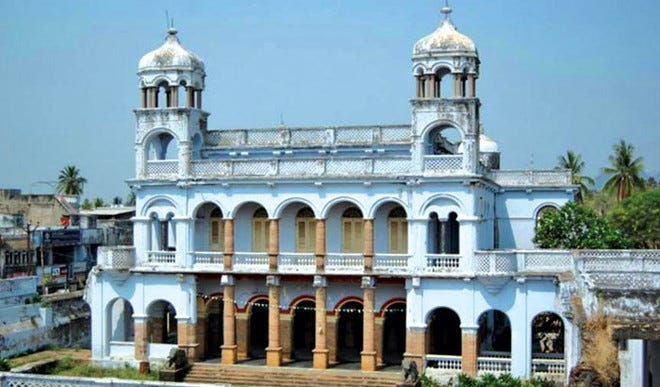
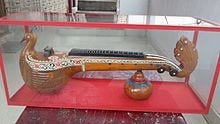
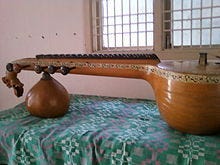

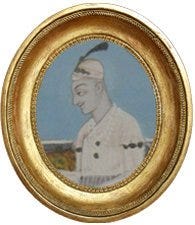
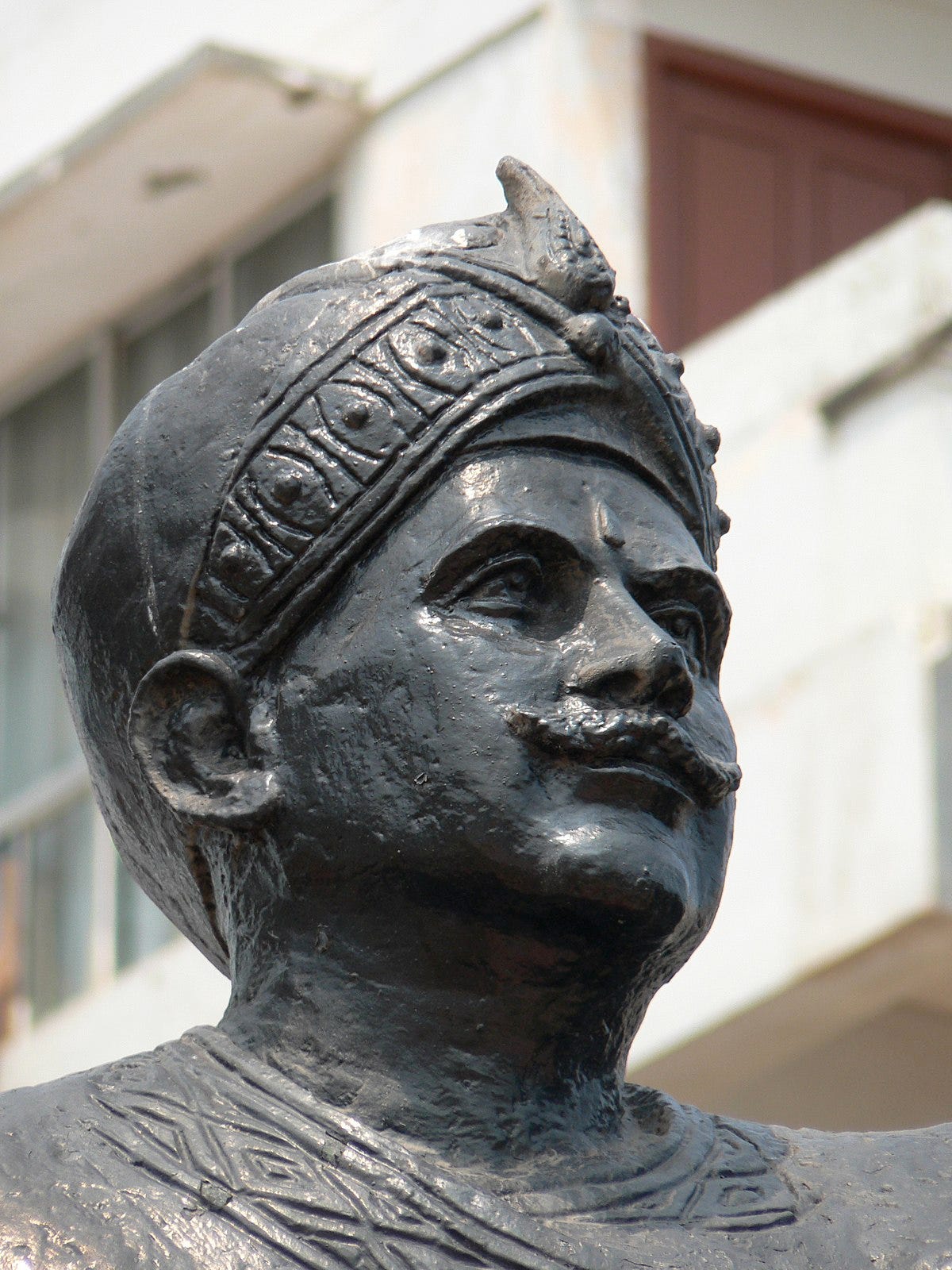
What a fascinating tale! Thank you for sharing.